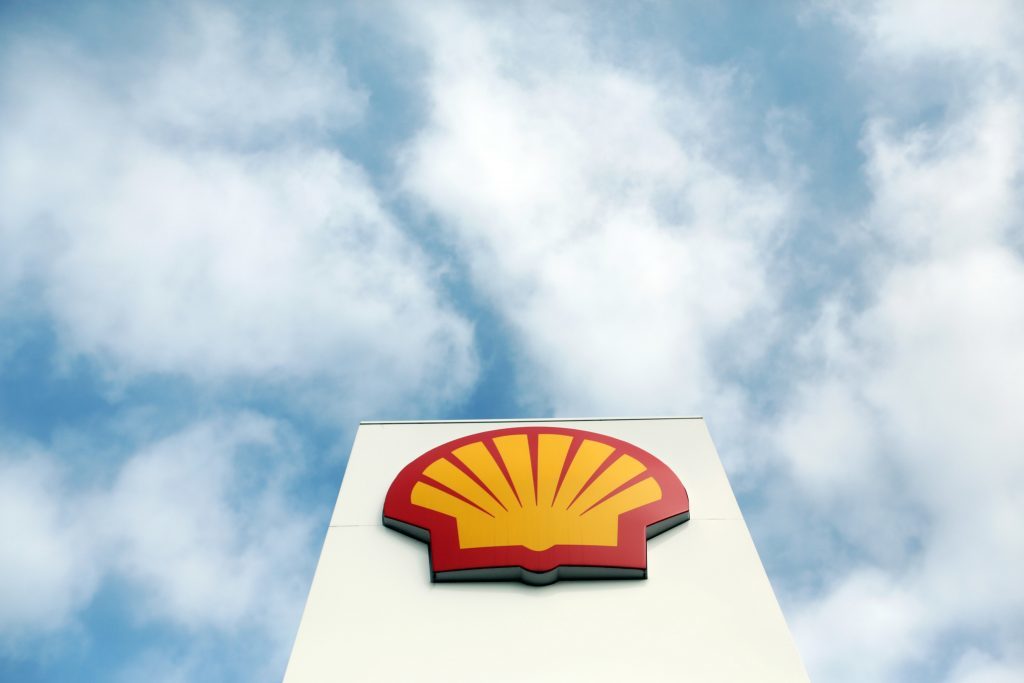
Oil is trading well below its price of a decade ago, but you’d have no idea looking at Royal Dutch Shell Plc’s giant pile of cash.
The Anglo-Dutch oil major generated the most cash from operations in 10 years last quarter — almost $15 billion. The last time Shell pumped out that much money was the year crude soared to $140 a barrel, compared with about $75 today.
As a result, the company is showing greater confidence. It increased the pace of a $25 billion buyback program, rewarding shareholders who stuck with it through crude’s collapse. The cash surge is a feather in the cap of Chief Executive Officer Ben van Beurden, who splashed more than $50 billion on buying BG Group Plc in 2016 during the depths of the downturn.
Yet investors, who have been impatient for greater returns, didn’t react positively to the results, which were largely as expected. Shell’s B shares dropped as much as 2.7 percent in early trading as sliding oil prices also dragged down peers.
“Truly, the amount of cash this company is generating is impressive and requires an exceptional strategy,” Chief Financial Officer Jessica Uhl said on a call with reporters. “I think there was perhaps a lack of understanding of our ability to achieve this cash flow.”
The $14.7 billion cash figure excludes working capital movements of $2.6 billion, the difference between assets and liabilities. Uhl attributed the figure to having to build up oil inventories in its refineries and gas in preparation for the high demand winter season. Even with that number subtracted from the total, Shell is still generating cash as if oil were well over $100 a barrel.
The cash boom can largely be attributed to the company’s broad portfolio, with higher prices for liquefied natural gas and a greater contribution from trading adding to earnings in the quarter. In the Gulf of Mexico, some of its most profitable barrels came online, helping drive the result. Additionally, after the BG acquisition Shell shed about $30 billion of aging or costly assets to reduce debt.
Uhl basically expects these sorts of cash figures to stay. The company said it will generate between $25 billion and $30 billion of free cash flow every year through 2020. That’s compared to $8 billion for the third quarter of this year, up from $3.7 billion a year-earlier. She’s also made clear how it plans to spend it. Shell will focus on completing its buyback program and reducing debt.
Raising Returns
Return on average capital employed jumped to 7.1 percent in the quarter from 4.6 percent a year earlier. Van Beurden has made lifting returns above 10 percent one of his principal goals. Adjusted profit climbed to $5.62 billion, a 37 percent gain from a year earlier though short of the $5.73 billion analysts estimated.
Shell’s B shares declined 2.1 percent to 2,510 pence as of 11:04 a.m. in London, as the Stoxx Europe 600 Oil & Gas Index lost 1.3 percent.
“The question is whether you can deliver the same cash flow print in the fourth quarter99,” said Christyan Malek, head of European, Middle East and African oil research at J.P. Morgan Chase & Co. “So the bar is quite high to the end of the year, and some may not necessarily believe, standing on the sidelines, that they can do that.”
Recommended for you
